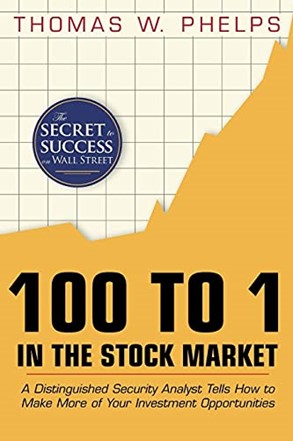How do you find the next 100-bagger stock? Author and fund manager Chris Mayer explains the secrets of 100 baggers in an interview with Callum Newman.
100-bagger stocks
100 baggers are stocks that return $100 for every $1 invested.
Finding a 100-bagger can bring life-changing gains.
Take Afterpay Ltd [ASX:APT], for instance.
Before its takeover by Block Inc [ASX:SQ2], Afterpay was one of the hottest stocks on the ASX.
In May 2016, APT debuted on the ASX, trading at $1.
But at its peak in 2021, Afterpay was trading for over $160 a share, becoming a proverbial 100 bagger.
Unsurprisingly, 100-bagger stocks are coveted by investors the world over.
But they are rare.
Rare and often a long time in the making.
Afterpay’s rapid rise is an outlier.
As Mayer found, it can take an average of 26 years for a stock to become a 100 bagger.
And as Indian firm Motilal Oswal explained in a study of 100 baggers on the Indian stock market:
‘Very few investors even conceptualize their equity investment multiplying 100 times. Even fewer actually experience a 100-fold rise in the price of their stock(s).
‘This is because such 100-fold rises may take longer than three, five or even 10 years’ time. And holding onto stocks beyond that period requires patience.’
So how do you go about finding them? Is there a way?
Mayer, fund manager and author of 100 Baggers: Stocks that Return 100-to-1 and How to Find Them, recently sat down with Callum Newman to discuss just that.

The journey to finding 100 baggers
Chris Mayer decided to write 100 Baggers after being recommended a book by investment analyst Thomas Phelps.
Phelps’ book was titled 100 to 1 in the Stock Market and was published all the way back in 1972.

Source: Amazon
The book studied the stocks that returned 100 to 1 and their characteristics.
Chris Mayer loved it and generously quoted from it to his newsletter readers.
But one day, one of his readers asked him to update the book. Would Phelps’ lessons replicate decades later?
So Mayer went to his publisher and asked if it would be interested in running a 100-bagger study of their own.
Mayer acquired a database stretching from 1962 to 2014. It yielded 365 stocks that fit the 100 bagger criteria.
The analysis of these 365 stocks — their similarities and differences — formed the basis of Mayer’s own book, 100 Baggers: Stocks that Return 100-to-1 and How to Find Them.
How to find 100-bagger stocks
What immediately struck Mayer was the diversity of the stocks. The list was not dominated by tech companies, as many expected.
In fact, as Mayer told Callum in the interview, ‘there are a lot of relatively ordinary businesses on that list.’
What’s the takeaway here?
You don’t necessarily have to confine yourself to the tech sector when seeking out a 100 bagger.
The tech sector attracts so many analyst’s eyeballs that it makes the 100-bagger search in that industry ultra-competitive.
You may instead find an information edge by branching to other sectors.
But the two biggest characteristics inherent in 100-bagger stocks were what Mayer dubbed the ‘twin engines’ of 100 baggers.
Growth in earnings and a higher multiple on those earnings.
As Mayer notes:
‘Ideally, you need it in both the size of the business and in the multiple the market puts on the stock, as we’ve seen — the twin engines, as I call them. This means you can’t buy a utility stock or large mature company — such as McDonald’s or Walmart or IBM — and expect anything close to a 100-bagger anytime soon (if ever). Finding what will become a 100-bagger is as much about knowing what not to buy as it is about knowing what to buy.’
Of course, there is more that goes into a 100 bagger.
What are the key drivers of earnings and multiples growth?
Is an economic moat necessary? What about return on equity?
For more on these questions, feel free to check out Callum’s thorough interview with Mayer.
Now, what can also help finding 100 baggers — and is also a fundamental skill regardless — is knowing how to calculate a company’s fair value.
But how do you come up with a fair valuation? What do you base it on?
If you’re interested in finding out how to approach valuing businesses, I suggest checking out our free report on just that.
Access our report here — ‘How to Find Bargain-Priced Superstars after a Big Sell-Off’.
Regards,
Kiryll Prakapenka,
For The Daily Reckoning Australia

